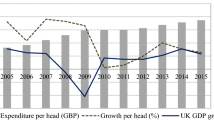Abstract
Benchmarking is a widely cited method to identify and adopt best-practices as a means to improve performance. Data envelopment analysis (DEA) has been demonstrated to be a powerful benchmarking methodology for situations where multiple inputs and outputs need to be assessed to identify best-practices and improve productivity in organizations. Most DEA benchmarking studies have excluded quality, even in service-sector applications such as health care where quality is a key element of performance. This limits the practical value of DEA in organizations where maintaining and improving service quality is critical to achieving performance objectives. In this paper, alternative methods incorporating quality in DEA benchmarking are demonstrated and evaluated. It is shown that simply treating the quality measures as DEA outputs does not help in discriminating the performance. Thus, the current study presents a new, more sensitive, quality-adjusted DEA (Q-DEA), which effectively deals with quality measures in benchmarking. We report the results of applying Q-DEA to a U.S. bank's 200-branch network that required a method for benchmarking to help manage operating costs and service quality. Q-DEA findings helped the bank achieve cost savings and improved operations while preserving service quality, a dimension critical to its mission. New insights about ways to improve branch operations based on the best-practice (high-quality low-cost) benchmarks identified with Q-DEA are also described in the paper. This demonstrates the practical need and potential benefits of Q-DEA and its efficacy in one application, and also suggests the need for further research on measuring and incorporating quality into DEA benchmarking.
Similar content being viewed by others
References
Athanassopoulos, A.D. and D. Giokas. (2000). “The Use of DEA in Banking Institutions: Evidence from the Commercial Bank of Greece.” Interfaces, 30(2), 81–95.
Athanassopoulos, A.D. (1997). “Service Quality and Operating Efficiency Synergies for Management Control in the Provision of Financial Services: Evidence from Greek Bank Branches.” European Journal of Operations Research, 98(2), 300–313.
Bessent, A., W. Bessent, J. Elam, and D. Long. (1984). “Educational Productivity Council Employs Management Science Methods to Improve Educational Quality.” Interfaces, 14(6).
Callen, J.L. (1991). “Data Envelopment Analysis: Partial Survey and Applications for Management Accounting.” Journal of Management Accounting Research, 3, 35–56.
Camp, R.C. (1993). A Bible for Benchmarking, by Xerox. Financial Executive, (July/August), 23–27.
Charnes, A., W.W. Cooper, and E. Rhodes. (1978). “Measuring the Efficiency of Decision Making Units.” European Journal of Operations Research, 2(6), 95–112.
Charnes, A., W.W. Cooper, Z.M. Huang, and Q.L. Wei. (1989). “Cone Ratio Data Envelopment Analysis and Multi-Objective Programming.” International Journal of Systems Science, 20, 1099–1118.
Chilingerian, J. and H.D. Sherman. (1990). “Managing Physician Efficient and Effectiveness in Providing Hospital Services.” Health Service Management Research, 3(1), 3–15.
Cook, W.D. and M. Hababou. (2001). “Sales Performance Measurement in Bank Branches.” OMEGA, 29, 299–307.
Cooper, W.W., L.M. Seiford, and K. Tone. (2000). Data Envelopment Analysis: A Comprehensive Text with Models, Applications, References and DEA-Solver Software. Kluwer Academic Publishers, Boston.
O'Keefe, M. (1994). Different Perspectives—Cutting Through Benchmarking Jargon. Bank Systems Technology, November, 53.
Rouse, P., M. Putterill, and D. Ryan. (2002). “Integrated Performance Measurement Design: Insights from an Application in Aircraft Maintenance.” Management Accounting Research, 13(2), 229–248.
Sherman, H.D. and G. Ladino. (1995). “Managing Bank Productivity using Data Envelopment Analysis (DEA).” Interfaces, 25(2), 60–73.
Soteriou, A. and S.A. Zenios. (1999). “Operations, Quality, and Profitability in the Provision of Banking Services.” Management Science, 45(9), 1221–1238.
Zhu, J. (2003). Quantitative Models for Performance Evaluation and Benchmarking: Data Envelopment Analysis with Spreadsheets and DEA Excel Solver. Kluwer Academic Publishers, Boston.
Author information
Authors and Affiliations
Corresponding author
Additional information
The review process of this paper was handled by the Edit-in-Chief Peter Hammer.
Rights and permissions
About this article
Cite this article
Sherman, H.D., Zhu, J. Benchmarking with quality-adjusted DEA (Q-DEA) to seek lower-cost high-quality service: Evidence from a U.S.bank application. Ann Oper Res 145, 301–319 (2006). https://doi.org/10.1007/s10479-006-0037-4
Published:
Issue Date:
DOI: https://doi.org/10.1007/s10479-006-0037-4




